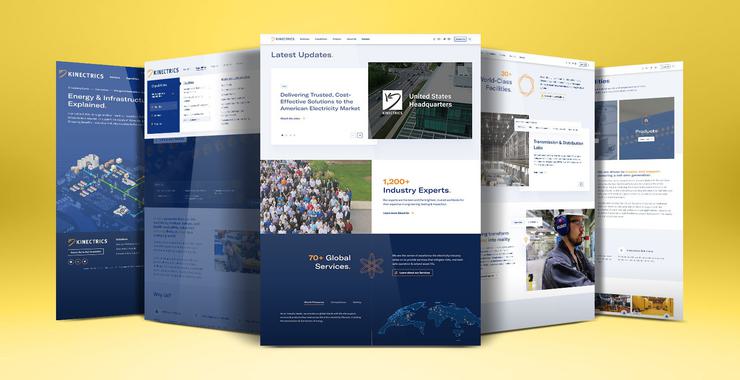What’s it like to work in Craft CMS?
Craft CMS makes it easy to author content without any programming knowledge, but what is it actually like to work with the backend? Here’s a simple overview.

Imagine you hired someone to build you a custom castle out of Legos. It looks cool, but what if you want to rearrange a few blocks? Maybe you want to make the moat a bit wider to keep out intruders, move the flags to a more prominent wall, or use extra blocks to build a new tower.
What if you couldn’t make those changes yourself? You would have to call your pro Lego builder, explain the changes you want, and wait until they have time to finish the job. And probably pay them again. That doesn’t sound straightforward or fun.
That’s what it’s like trying to edit many types of websites. Unless you’re a skilled programmer, you often have to ask a developer to post content, organize assets, or make even the simplest tweaks to your design.
 If you're not into castles, maybe a cozy log cabin.
If you're not into castles, maybe a cozy log cabin.
Craft CMS puts the Legos in your hands. Each building block is predesigned according to your specific needs, including branding, functionality, and your site’s existing design and structure.
Once a developer has set you up with the initial Craft CMS site, you and your team are free to build, modify, and expand that castle as you like.
The setup: Designing your custom blocks
When you first start a website build or migration in Craft CMS, it’s all about getting organized. Your developers will take stock of any existing assets, your product and service offerings, your brand guidelines, and much more before they start work on designing and structuring your site.
At this stage, you can work with the devs to come up with specific content needs. Some will be page or section-specific, like a filtration system for products, and some can be applied sitewide, like a call-to-action block. This is the time to define your needs for the site and anticipate how users will want to interact with it.
Building pages with predesigned blocks
Once you have your blocks, you can start building. Certain pages on your website (like your homepage) will have a fixed design to keep the design consistent and intentional. Others will be designed with a page-builder system to allow more flexible content creation.
If you can dream it, we can build it. Example of a stylized pullquote
Common candidates for the page-builder system are posts such as blogs, case studies, events, and other resources. You’ll need to define the types of building blocks you want access to whenever you create or edit one of these pages.
Take the blog you’re reading right now, for example. You’ll find examples of body text (of course), different headings, embedded images, a pullquote, a callout to a related case study, a “sticky nav” menu that links to subsections on this page, and a CTA at the end. The dev team needs to create these blocks in the first place, but once they’re set up, you can use them anytime to create a blog that looks and flows the way you want.
Flexible and virtually unbreakable
You don’t have to do it our way. You can build the ability to add whatever content makes sense for your business, whether it’s interactive graphs, product callouts, images with animations or clickable pins, or links to pages about your salespeople or subject matter experts.
This method of content authoring comes with built-in guardrails, so you can’t really mess it up. Brand elements like fonts, colours, and designs are locked down to keep the look and feel consistent across the site. You get all the creative freedom you need without having to worry about breaking brand rules or causing technical errors.
Creating content relationships
One of Craft CMS’ superpowers is the ability to define asset types, categorize content, and easily build relationships between different types of content.
In practice, this could mean categorizing pages by things like industry type or product type to make it simpler for users to find content they’re interested in.
Another example is creating built-in blocks that link off to related types of content — for example, a case study might have callouts to a few other case studies with similar subject matter or related categories.
Again, relationships can be created, added, and edited by non-programmers with the click of a button.
What it looks like in the backend
In the backend of your website, or the behind-the-scenes area where edits are made, you don’t have to look at a single line of code if you don’t want to. Everything is done with buttons and simple, easy-to-edit fields.
Craft CMS has a “live preview” feature that lets you see changes take effect as you make them but before they are published, so it’s easy to visualize what will happen when you edit content and they’re not pushed live until you say so.
If you have a multi-language site, Craft CMS’ localization features let you simply flip a switch to see the other versions of your site, and you can cross-post content across each version to keep things consistent.
There are tons more features to explore, including streamlined user management that lets you assign different permission levels to different team members, as well as plugins for e-commerce support, contact forms, and SEO tools.
Hey, look, a stylized CTA
A content editor made this by clicking a button and pasting in her text. It’s impossible to break, so you can do it too! To get a better understanding of how Craft CMS can support content authoring on your website, talk to our talented dev team.
